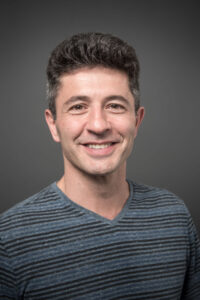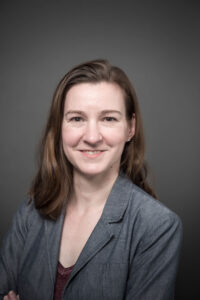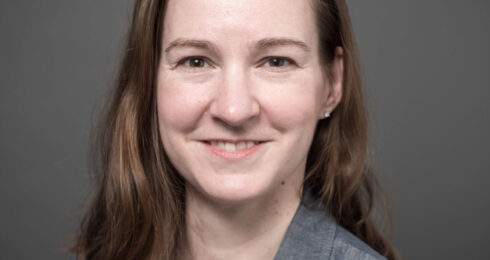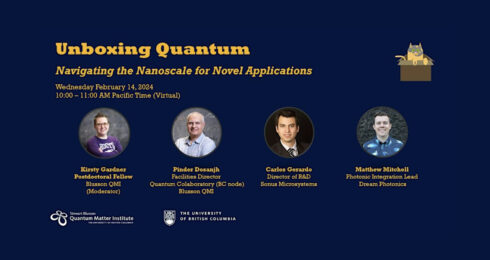Hosted by the Canadian Science Policy Centre, quantum thought leaders and industry experts from across Canada came together this week for a panel discussion on Canada’s National Quantum Strategy (NQS). Blusson QMI Scientific Director Andrea Damascelli and Investigator Sarah Burke were part of the panel.

Image: Andrea Damascelli, Scientific Director, Blusson QMI.
Damascelli regarded the launch of the quantum strategy as a significant milestone for Canada.
“In 2015, the federal government made major investments in quantum R&D by creating three research institutes under the Canada First Research Excellence Fund (CFREF), which brought together academia, industry and government and positioned the country at the forefront of the field,” said Damascelli.
“The strength of the NQS is that it recognizes Canada’s position as a leader in quantum technology and further unites the quantum community to work towards focused missions. The strategy is also important for strengthening international connections with other countries that are pushing forward in this field, highlighting our strengths in Canada across the globe.”
Backed by an investment of $360 million, the NQS was launched in January 2023 to cement Canada’s position as a leading country in quantum research and technology development, expand the industry, and train the future quantum workforce.
Blusson QMI Investigator Sarah Burke acknowledged the importance of the newly formed Quantum Advisory Council.
“The Advisory Council is well-positioned to identify particular needs of the industry and advise the research community and the government about those needs and use cases for future R&D,” said Burke.

Image: Sarah Burke, Investigator, Blusson QMI.
“Coming from a quantum materials perspective, our institute is focused on the discovery and engineering of materials that are the building blocks for the quantum technologies targeted in the NQS.
“Collaboration is key and central to a lot of our work. Emerging quantum technologies require fundamental science to be done behind them, which can then accelerate the industry forward.”
The Quantum Advisory Council was established by the federal government this summer to provide impartial advice to Innovation, Science and Economic Development Canada and monitor the progress of the NQS. The council draws on expertise from industry and the academic, not-for-profit and investment communities.
“Funded under the CFREF program in 2015, Blusson QMI has grown to be an R&D powerhouse made of agile teams of physicists, chemists, and engineers who work at the cutting edge of quantum science. With our expertise and world-leading R&D facilities, we’re well-positioned to continue to support the industry to overcome challenges and move forward,” said Damascelli.
“As for international partnerships, we’re a lead partner in the Max Planck-UBC-UTokyo Centre for Quantum Materials, which is a unique collaborative venture between Blusson QMI, Max Planck Society in Germany and the University of Tokyo in Japan. Since its establishment, the partnership has supported more than 90 collaborative projects, scholarly exchanges, and annual workshops.”
Speaking to the potential challenges of realizing the NQS, Prof. Damascelli said an area that requires further investment is the training of the future quantum workforce and the retention of the scientific staff that operate the labs.
“A huge challenge is ensuring that we have the quantum workforce that we will need in the future to support the industry. In parallel to that, which I think is critical, is also supporting the technical and scientific personnel that not only enable the translation effort to industry but also provide hands-on training to students and businesses,” Damascelli said.
“It’s crucial that we maintain our intellectual capacity in Canada, making sure we retain the people that we’ve trained and the people that we brought here to build up our strengths,” added Burke.
“Having sustained funding for fundamental research and training will be critical to our future so we can ensure that we have the next technology in our pockets, that it’s not somebody else developing it.
“We need to invest in areas that can lead to tangible outcomes in the short term but, most importantly, in areas that could lead to unimaginable breakthroughs in the next few decades.”
Other panel speakers included Dr. Aimee K. Gunther, Deputy Director of the Quantum Sensors Challenge Program at the National Research Council Canada; Nick Werstiuk, CEO of Quantum Valley Ideas Lab; and Eric Miller, Fellow of the Canadian Global Affairs Institute.
Banner image: composite gap function of a twisted bilayer of a copper-based material from Blusson QMI’s studies on topological superconductivity – read more here.
Media contact: Shahrzad (Zad) Abbasi | 604 360 6761 | shahrzad.abbasi@ubc.ca


